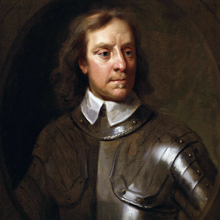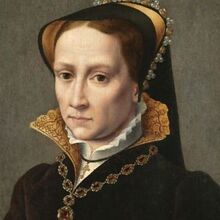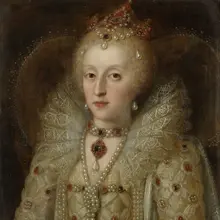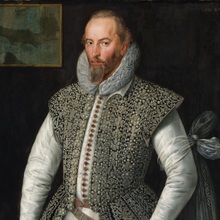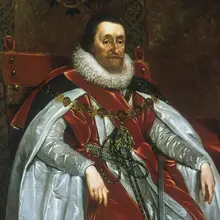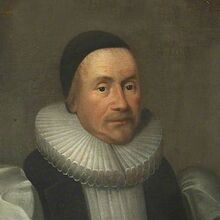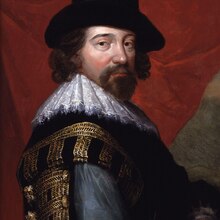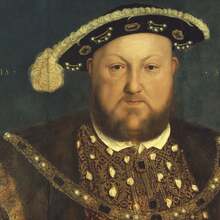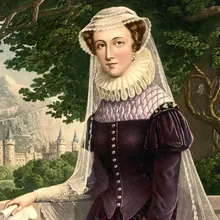Sir Francis Drake was born around 1540 in Tavistock, Devon, England. He was the second of three sons of Edmund Drake, a farmer and former sailor, and Mary Mylwaye, the daughter of a naval officer. He grew up in a turbulent time, as England was under constant threat from Spain, France, and Scotland. He learned to sail from an early age, as his family moved to Kent and lived near the coast.
Drake's first voyage to the New World was in 1563, when he joined his cousin Sir John Hawkins on a slave-trading expedition to Africa and the Caribbean. He made two more voyages with Hawkins in 1564 and 1567, but the last one ended in disaster when they were attacked by a Spanish fleet at San Juan de Ulúa, Mexico. Drake and Hawkins barely escaped with their lives, but lost most of their ships and cargo. Drake developed a lifelong hatred for the Spanish and vowed to take revenge.
In 1570 and 1571, Drake made two independent voyages to the West Indies, raiding Spanish ports and ships along the way. He gained a reputation as a daring and successful privateer, or pirate with a royal license. In 1572, he led another expedition to the Caribbean, where he captured the town of Nombre de Dios on the Isthmus of Panama and seized a large amount of silver and gold from a mule train. He also explored the Pacific coast of Panama and saw the South Sea (later known as the Pacific Ocean) for the first time.
In 1577, Queen Elizabeth I secretly commissioned Drake to lead an expedition to the Pacific coast of America, where Spain had established colonies and mines. Drake left Plymouth on December 13, 1577 with five ships and about 160 men. He sailed across the Atlantic Ocean and reached Brazil in April 1578. He then entered the Strait of Magellan, a narrow passage between South America and Tierra del Fuego, in August 1578. He was the first Englishman to navigate through the strait, but he lost one ship in a storm and another one deserted.
Drake emerged into the Pacific Ocean in September 1578 with only three ships left. He then sailed north along the coast of Chile and Peru, attacking Spanish towns and ships as he went. He captured a rich Spanish galleon called Nuestra Señora de la Concepción (also known as Cacafuego) near Lima in February 1579. He took over 20 tons of silver and gold from the ship, as well as jewels, pearls, silk, spices, and wine.
Drake continued north until he reached California in June 1579. He landed near Point Reyes (present-day San Francisco Bay) and claimed the land for England. He named it Nova Albion (New Britain) and erected a brass plate with his name and the queen's coat of arms. He stayed there for over a month to repair his ship, which he renamed from Pelican to Golden Hind.
Drake decided not to return by the same route he came, as he feared that the Spanish would be waiting for him. Instead, he sailed west across the Pacific Ocean in July 1579. He visited several islands along the way, such as Moluccas (Indonesia), Celebes (Sulawesi), Java, and Sumatra. He also stopped at Cape of Good Hope (South Africa) in June 1580.
Drake finally arrived back in England on September 26, 1580, after almost three years of sailing around the world. He was the first Englishman and the second person ever (after Ferdinand Magellan's expedition) to circumnavigate the globe. He brought back a huge amount of treasure and spices, which made him and his crew very rich. He also brought back valuable information and maps of the lands he had visited.
Queen Elizabeth I was very pleased with Drake's achievements and rewarded him with a knighthood on April 4, 1581. She also visited his ship, the Golden Hind, which was docked at Deptford on the River Thames. The ship became a tourist attraction and was preserved for over 100 years.
Drake continued to serve the queen as a naval commander and a privateer. In 1585, he led a large expedition to the West Indies and the Spanish Main, where he sacked Santo Domingo, Cartagena, and St. Augustine. He also rescued the failed English colonists from Roanoke Island (North Carolina) and brought them back to England.
In 1587, Drake carried out a daring raid on the Spanish port of Cadiz, where he destroyed or captured over 100 ships that were being prepared for an invasion of England. He also attacked other ports along the coast of Spain and Portugal. He famously said that he had singed the king of Spain's beard.
In 1588, Drake played a crucial role in defeating the Spanish Armada, a large fleet of ships sent by King Philip II of Spain to invade England. Drake was the vice admiral of the English fleet, which was led by Lord Howard of Effingham. Drake used his superior tactics and speed to harass and damage the Spanish ships as they sailed up the English Channel. He also helped to set fire to eight English ships filled with gunpowder and sent them into the Spanish fleet at Calais, causing panic and confusion. The Spanish Armada was eventually scattered by storms and forced to retreat around Scotland and Ireland, where many ships were wrecked or captured.
In 1589, Drake led another expedition to Spain and Portugal, known as the English Armada or the Drake-Norris Expedition after Sir John Norris, who commanded the land forces. The aim was to support a rebellion against Philip II in Portugal and to destroy the remaining Spanish ships and resources. However, the expedition was a failure, as Drake and Norris failed to coordinate their attacks and faced strong resistance from the Spanish and Portuguese forces. They also suffered from bad weather, disease, and lack of supplies.
Drake's last voyage was in 1595, when he joined forces with his old rival Sir John Hawkins to attack Panama, where Spain had a treasure house. The voyage was plagued by problems from the start, as Drake and Hawkins quarreled over the strategy and objectives. They also faced difficulties in finding and capturing Spanish ships and towns. They managed to reach Panama in December 1595, but their attack on Nombre de Dios was repelled by the Spanish defenders.
Drake fell ill with dysentery, a severe infection of the intestines, while anchored off Portobelo present-day Colón .He died on January 28, 1596 at the age of about 56. He asked to be dressed in his full armor before he died. He was buried at sea in a lead coffin, along with his cousin Hawkins, who had died earlier in November.
Drake's death marked the end of an era of exploration and adventure that had made him famous around the world. He was a hero to the English people, who admired his courage, skill, and patriotism. He was also a terror to the Spanish people, who hated him as a pirate and a heretic. He was known as El Draque the Dragon by the Spanish, who offered huge rewards for his capture or death.
Drake's exploits inspired many writers, poets, artists, and filmmakers over the centuries. He was immortalized in works such as The World Encompassed by Sir Francis Drake 1628, a compilation of accounts by his nephew and other crew members; The Famous Voyage of Sir Francis Drake 1597, a poem by Michael Drayton; The Unfortunate Voyage of Sir Francis Drake 1659, a play by Thomas Heywood; The Life of Sir Francis Drake 1750 a biography by George Chalmers; The Sea Hawk (1915), a novel by Rafael Sabatini; The Sea Hawk 1940 a film starring Errol Flynn; Uncharted: Drake's Fortune 2007 a video game featuring a descendant of Drake; and The Golden Hind 2001 an opera by Louis Andriessen.





